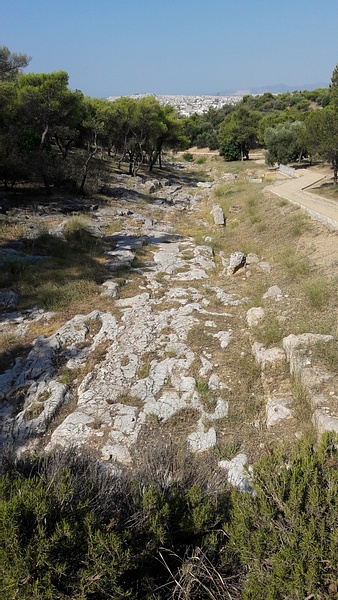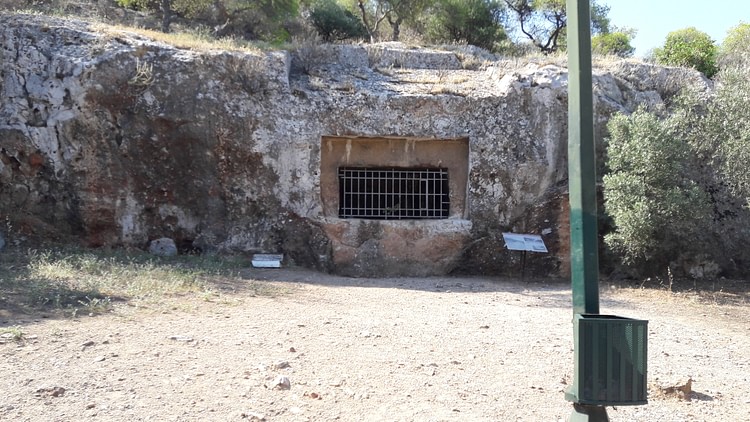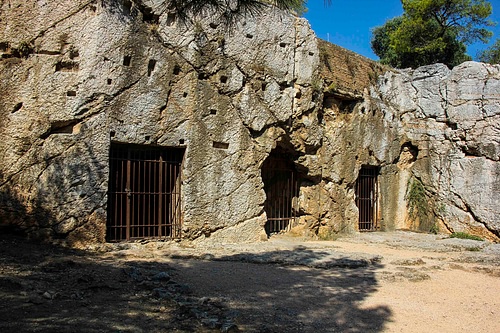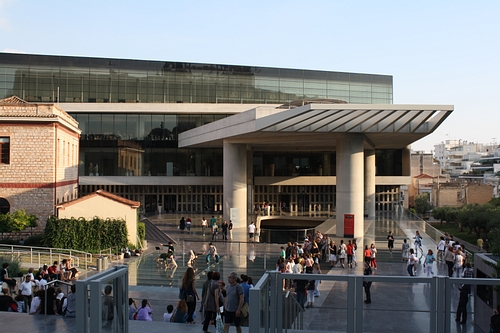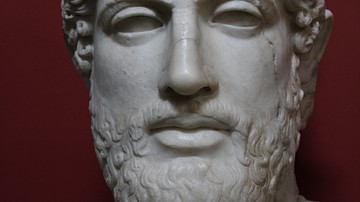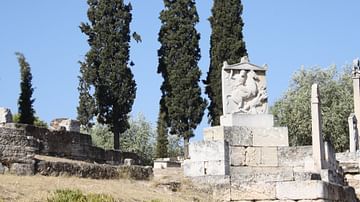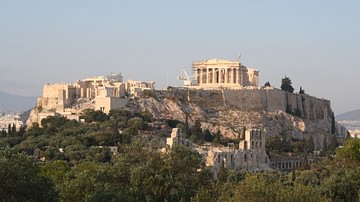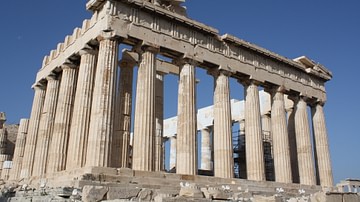For centuries, the Parthenon has been Athens' biggest tourist magnet. Pausanias gushed over it in the 2nd century CE, Elgin coveted it, Byron mourned for it, and countless tour groups and camera-toting enthusiasts swarm over it today. But stunning as it undoubtedly is, there are other sites dotted around the city which almost no one takes the time to visit. Un-ticketed and largely deserted, these offer you a more intimate experience of the ancient city.
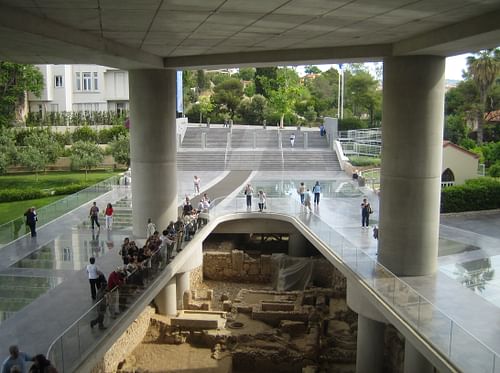
1. KoiLe Deme
The remains of Koile Deme, one of the ancient districts of the city, can be seen on the west side of Filopappou Hill. You can reach it from the drop off point beneath the Parthenon by putting the Acropolis behind you and walking up the beautifully paved path directly ahead. After a short climb, you come across two paths on the right. Take the second and turn immediately left down a rocky, sandy path. This is Koile.
At first glance, there might not seem to be much there, but when you look closer you'll see the remains of a road with grooves cut into it for the passage of wagon wheels and a water channel running alongside. Further down the slope there's the unmistakable shape of houses carved into the sides of the valley and even a staircase. There are no ropes separating you from the remains here – you can wander about freely, trying to imagine this bustling street at its height. It was once protected by the Long Walls, a set of fortifications established by Themistocles to guard the route from the Acropolis to the port of Athens at the Piraeus, hence the remains of the road you can see.
After the war with Sparta the walls were torn down and when the next threat appeared, namely Philip II of Macedon (Alexander the Great's Dad), Koile was left outside the new defences and abandoned. It was later used as a burial site and you can also make out the remains of graves, sometimes overlapping the walls of houses. The path leading down the valley is dotted with several information boards to help you make out what you can see.
2. Cimon's Tomb
If you return up the slope from Koile, you'll see a rock-cut tomb ahead of you on the main pathway. This is the tomb of Cimon (Kimon), a victor in the chariot-races at the Olympic Games in 536, 532 and 528 BCE. Legend (and Herodotus) has it that he was murdered by Athens' last tyrants, Hippias and Hipparchus, but there is some doubt over whether this is true. He was (definitely) the father of Miltiades (famous for his part in the victory at Marathon) and grandfather of the Athenian general Cimon (also famous for victories over the Persians). The tomb is empty now, but if you imagine the road through Koile passing by it, you can imagine how prominent a position it would have had in ancient times. No sign of the Olympic winning horses that were supposed to be buried opposite him though.
3. PnYx Hill – The Athenian Assembly
Turning with your back to Cimon's tomb, you'll see another path leading up the hill ahead of you, to the right of the turning you took to Koile. If you follow this path up and take a right through a gate (which stands permanently open) you will find yourself on the Pnyx. Follow the path as it rises through trees until you see an open plateau on your right. The view of the Acropolis is utterly stunning from here and you get a true sense of how it rises dramatically above the city.
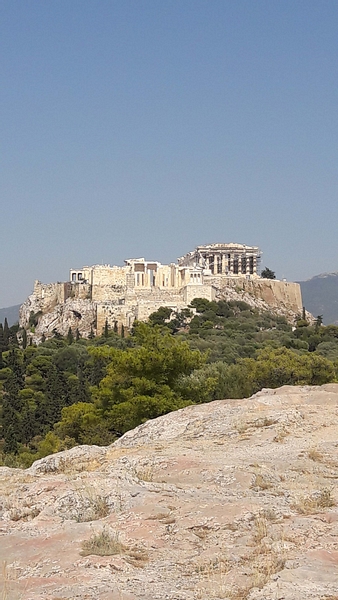
This plateau is actually the assembly of the people, as a small information panel will tell you. You can see a speaker's platform cut into the rock with some steps leading up to it. From this spot, Themistocles argued for building the fleet that would eventually win the Battle of Salamis, defeating the might of the Persian navy. From here Pericles won approval to rebuild the Acropolis, creating the monument we can (sort of) see today. It is a truly magnificent spot. Some pictures on the information panel help you to reconstruct the semi-circular seating that would once have faced the speaker's platform. Unfortunately, the platform is the only part of the monument that you can't walk on, but I recommend standing at its base and looking out – the power of the position is overwhelming.
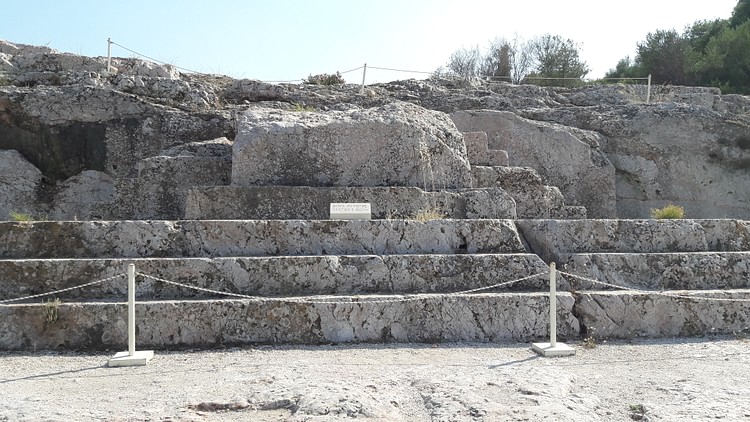
4. Socrates' prison
If you return down the path towards Cimon's tomb and turn left, you will soon see another little path going off to your right. This leads towards what is reputed to be the prison in which Socrates was held. On the spot, you are faced with three cave-like openings in the rock face which have been sealed off with iron bars. Shallow square holes in the façade suggest buildings once projected outwards, supported by timber – as indeed an information panel to the left will tell you. The designation as the prison of Socrates, the philosopher who was notoriously tried for 'corrupting the youth of Athens and denying the existence of the Gods', found guilty and executed with hemlock poisoning in 399 BCE, is rather late in origin, making it highly questionable. Nevertheless, it is only a small detour on your route and worth looking at, if only to mitigate the awe you might feel at the assembly and the Agora. Athenian democracy may have been a fantastic innovation, but it had its nasty side as well.
5. Excavation under the Acropolis Museum
Returning to the drop off point below the Acropolis, you can turn right and follow the Dionysiou Areopagitou along the bottom of the south slope towards the Acropolis Museum. The museum itself is a triumph. It is beautifully arranged inside and also very mindful of the landscape on which it rests, despite its ultra-modern look. For, underneath the museum, are the remains of another deme of the city which was excavated in 1997 when the Museum was about to be built. The area makes visible several different periods of Athens' history, although the late antique period is most obvious, with several rooms displaying intricate mosaic flooring. Unfortunately, you need to go inside the museum to get much information about the site, but as entry is only €5 the inconvenience is slight.
Look out for the round room with a circular pool in the middle that is directly in front of the museum entrance, the entrance hall of a building from the 7th century CE. Tourists annoyingly flick coins into the pool, although I can only think that the museum must benefit from the extra income. Inside the museum, a glass floor allows you to see more of the excavation underneath. In the gallery of the Acropolis slopes, keep looking down to see a 3rd century 'engainion' that is housed within the floor. An engainion is a burned offering that was made by ancient Greeks when a new building was founded to bless the structure, and then buried in the foundations. It is very fitting that the museum has recycled one to bless the new incarnation of the site.
Whilst you are in Athens, the Ancient Agora, featuring the best-preserved temple in the ancient Greek world, the Library of the Emperor Hadrian, the Roman Agora, and the Temple of Olympian Zeus (which is only a little further on from the excavation under the museum) are all definitely worth a visit. So too is the Acropolis, despite the scaffolding that currently hides the front of the Parthenon. The big attractions are big attractions for a reason, and with a combined ticket that will get you into most of them over 5 days, it's very reasonably priced. Nevertheless, I enjoyed the exclusivity of the sites above, the sense of experiencing something that most tourists don't take the time to discover. Athens might be one of the world's major tourist hot spots, but it still has secrets to deliver.
